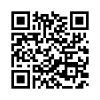STUDI KASUS LINGUISTIK FORENSIK: HOAKS REKAMAN SUARA YANG DIDUGA GATOT NURMANTYO
Abstract
(Title: A Forensic Linguistic Study Case: Hoax of Recorded Voice Who Was Allegedly From Gatot Nurmantyo). This study aimed to describe the comparison between languages on Gatot Nurmantyo's Similar Voice Sample (SVS) recording with language on Gatot Nurmantyo's Original Voice Sample (OVS) recordings. The data source were one SVS record and three OVS records (OVS01—OVS03). Data were collected through observation, copying, and recording. The instrument for data collection was in the form of human, researcher himself with the recording devices and stationery. The analysis was carried out comprehensively with a review of various aspects including Phonology, Sociolinguistics, Discourse, and Stylistics. The results of the study were as follows. First, there were significant differences between languages on SVS and language on all three OVS recordings in terms of Sociolinguistic, Discourse and Stylistic aspects. Second, on the Phonological aspect there was a tendency for the similarities between language on the SVS recording and language on all three OVS recordings in several parts including the duration of word utterance, the energy intensity of the word utterance, and the sound of the words. Therefore, it could be concluded that on a Classical Likelihood Scales, the SVS and OVS recordings were not from the same speaker.
Keywords: forensic linguistic, comprehensive, recording, Praat
Full Text:
PDFReferences
Aminoedin, Ny. A., dkk. (1984). Fonologi Bahasa Indonesia: Sebuah Studi Deskriptif. Jakarta: Pusat Pembinaan dan Pengembangan Bahasa Departemen Pendidikan dan Kebudayaan.
Chaer, A. dan Leonie A. (2010). Sosiolinguistik Perkenalan Awal. Jakarta: Rineka Cipta.
Coulthard dan Johnson. (2007). An Introduction to Forensic Linguistics: Language in Evidence. From https://pasca.uns.ac.id/s3linguistik/wp-content/uploads/sites/44/2016/10/Malcolm_Coulthard__Alison_Johnson.pdf
French, P. (2017). A Developmental History of Forensic Speaker Comparison in the UK. From http://eprints.whiterose.ac.uk/117763/7/Developmental_History _of_Forensic_Speaker_Comparison_in_the_UK.pdf
Halliday, M.A.K. & Ruqaiya Hasan. (1976). Cohesion in English. London: Longman.
Kurniati dan Mardikantoro. 2010. "Pola Variasi Bahasa Jawa (Kajian Sosiodialektologi pada Masyarakat Tutur di Jawa Tengah)" dalam Jurnal Humaniora Vol. 22, Oktober, Hlm. 273—284. https://jurnal.ugm.ac.id/jurnal-humaniora/article/view/1001/832
Lindh, J. (2017). Forensic Comparison of Voices, Speech and Speakers: Tools and Methods in Forensic Phonetics. From https://gupea.ub.gu.se/bitstream/2077/52188/4/gupea_2077_52188_4.pdf
Muhadjir. (2000). Bahasa Betawi: Sejarah dan Perkembangannya. Jakarta: Yayasan Obor Indonesia.
Mukattash, BK. (2016). "The Role of Forensic Phonetics in Legal Investigation: A Case Study of Two Speaker-Identified/Unidentified Recorded Samples" dalam Journal of Literature, Languages and Linguistics, IISTE, Vol. 29, hlm. 31—37. https://iiste.org/Journals/index.php/JLLL/article/view/34706
Olsson, J. (2004). Forensic Linguistics. From https://linguistlist.org/issues/15/15-2774.html
Pitoyo, A. (2017). “Interferensi Bahasa Jawa ke dalam Bahasa Indonesia Mahasiswa Program Studi Pendidikan Bahasa dan Sastra Indonesia dalam Perkuliahan Keprotokolan” dalam Jurnal Pena Indonesia (JPI), Vol. 3 No. 2, hlm. 185—200. https://journal.unesa.ac.id/index.php/jpi/article/view/2131
Setiawan dan Hidayat. (2015). "Referensi Bahasa Jawa ke dalam Bahasa Indonesia pada Keterampilan Berbicara Siswa Negeri 1 Pleret, Bantul" dalam Jurnal Lingtera, Vol. 2, hlm. 156—168. https://eprints.uny.ac.id/12060/
Subandowo, D. (2017). "The Language Interference in English Speaking Ability for Efl Learners" dalam ISELT-6. Padang: Universitas Negeri Padang. https://www.researchgate.net/publication/320199876_The_Language_Interference_in_English_Speaking_Skill_for_EFL_Learners
Subyantoro. (2017). “Langkah Prof Subyantoro Kembangkan Linguistik Forensik di Indonesia” dalam artikel yang dimuat oleh Universitas Negeri Semarang. https://unnes.ac.id/berita/langkah-prof-subyantoro-kembangkan-linguistik-forensik-di-indonesia/
Susanto. (2017). "Potensi dan Tantangan Linguistik Forensik di Indonesia" dalam ILSIA III. Jakarta: Ikatan Ilmuwan Indonesia Internasional. https://i4indonesia.org/wp-content/uploads/2018/03/ILSIA_III-2017_ISBN_978-602-74602-3-2.pdf
Tarigan, Henry Guntur. (2009). Pengajaran Wacana. Bandung: Angkasa.
Thomason, S. (2001). Languange Contact. From http://www-personal.umich.edu/~thomason/temp/lgcont1.pdf
Widyamartaya, A. (1990). Seni Menuangkan Gagasan. Yogyakarta: Penerbit Kanisius.
DOI: https://doi.org/10.21831/diksi.v27i1.26171
Refbacks
- There are currently no refbacks.
Jurnal Diksi is published by Faculty of Languages, Arts, and Culture, Universitas Negeri Yogyakarta. It is licensed under a Creative Commons Attribution-ShareAlike 4.0 International License. Based on a work at http://journal.uny.ac.id/index.php/diksi
Our Journal has been Indexed by:
Diksi Journal is published by the Faculty of Languages and Arts Universitas Negeri Yogyakarta in collaboration with Himpunan Sarjana Kesusasteraan Indonesia (HISKI)
Supervised by:





2.png)










